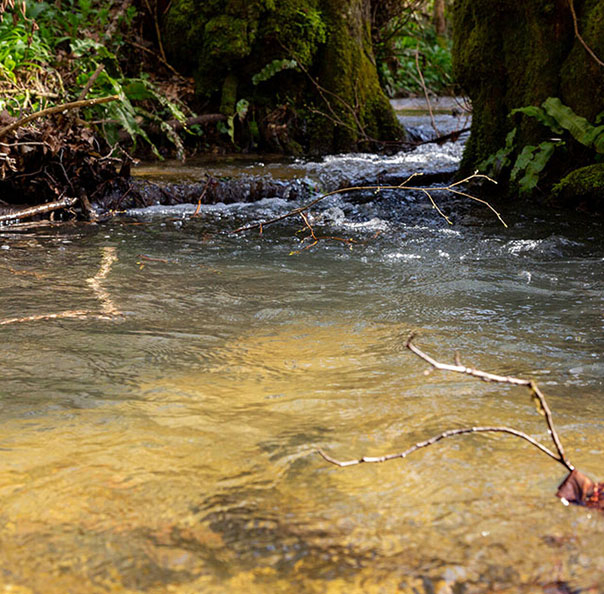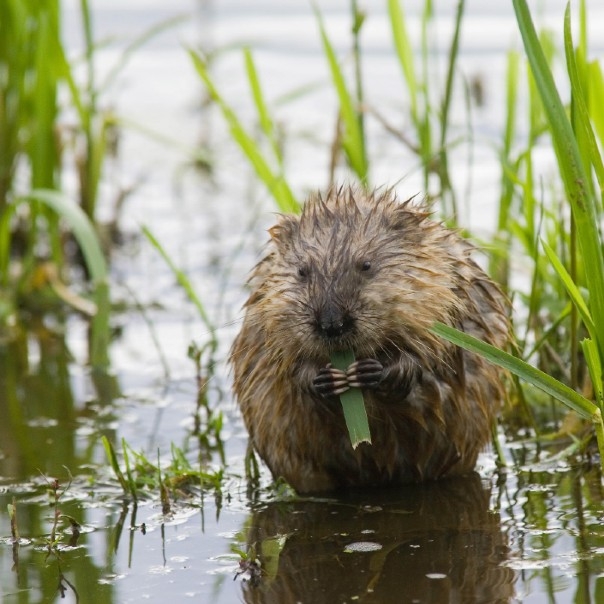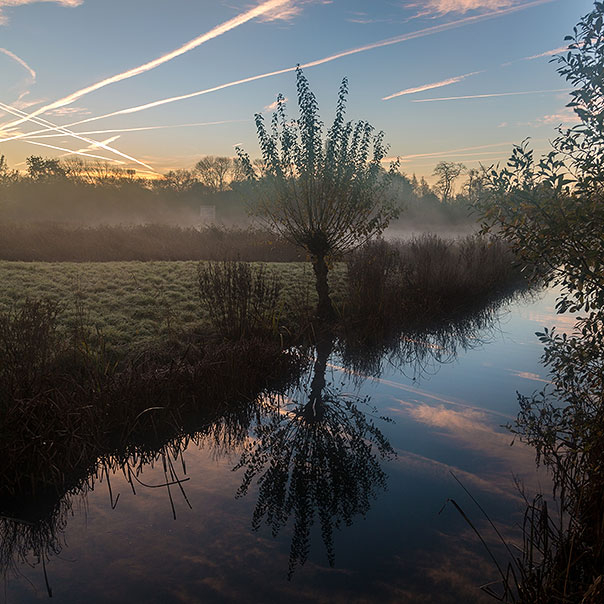Rivers and streams
These life-giving sources of freshwater lie at the heart of many civilisations.
From energetic upland brooks to lowland rivers and meandering streams weaving down a hillside, their individual journeys shape the land around them.
They’re essential to many animals, whether land or water dwelling, providing food, water and a safe habitat. Despite being our main source of drinking water and providing a livelihood for millions of people, they cover only around 0.1 % of land on earth.
1% of the earth's surface is made up of freshwater ecosystems, yet they provide habitat for 130,000+ species
Introduction to rivers and streams
What is a river?
A river is a moving body of water - usually freshwater - that flows from its source on high ground, across land, and then into another body of water, which could be a lake, the sea, an ocean or even another river. They’re often surrounded by other ‘riverine’ wetlands like reedbeds, estuaries and freshwater marshes. A stream (also called a brook or a creek) is a natural flow of water that follows a more temporary path that is usually not in a valley.
What lives in rivers and streams?
The aquatic life that rivers support is as diverse as the rivers themselves. Some swim freely in the water, while others live along the muddy bottom. Some prefer life in midstream or on rocks beneath a fast-moving flow - others seek the shallows or quiet pools. Many river and stream species are adapted to life under high-speed conditions. Salmon and trout, for example, are torpedo-shaped and can swim against the current more easily than other fish. Some, like torrent beetles and stonefly larvae, have low-slung or flattened bodies that enable them to cling to rocks without being washed away. Dippers are semi-aquatic warblers that walk underwater to find their invertebrate prey.
Water quality often determines which species will be supported in a particular river or stream. Temperature, velocity, oxygen content, mineral content, and muddiness are all factors. Cold-water trout, for example, prefer cool, shady streams, while snails require calcium-rich waters in order to build their shells.
Rivers have played an essential part in the birthplace of some of the world’s greatest civilizations. For almost 3,000 years the fertile waters of the Nile allowed the people of Ancient Egypt to thrive in the gruelling climate.
Why we need rivers and streams
Many rivers and streams are sources of drinking water. In more economically developed countries, about half the freshwater supply is used for industry. In less economically developed countries, up to 90 percent is used for the irrigation of crops. Rivers are also still used in many countries as community places for bathing and laundry.
The fish and plants in rivers and streams are often a source of food for humans. Although most fish used for food comes from the ocean, commercially important freshwater fish include trout and salmon. Farmers often use aquatic plants, such as marsh grass, reeds, and sedges, for feeding livestock.
Throughout history, rivers have acted as boundaries. If they were too big or too fast to cross easily, they limited overland travel. Rivers also provide a means of transportation and trade. Cities built at the edge of rivers could import or export goods more easily and cheaply than cities reachable only by land routes. Many rivers are still important cargo routes.
"Never in his life had he seen a river before—this sleek, sinuous, full-bodied animal, chasing and chuckling, gripping things with a gurgle and leaving them with a laugh, to fling itself on fresh playmates that shook themselves free, and were caught and held again. All was a-shake and a-shiver—glints and gleams and sparkles, rustle and swirl, chatter and bubble."
Wind in the Willows, Kenneth Graham
Rivers and streams in our culture
From the meandering Devon river that Henry Williamson enchanted the world with in Tarka the Otter in 1927 to the enchanting description of mole’s first sighting of the river in Wind in the Willows, writers have been drawn to rivers for inspiration and solace. Ted Hughes’ River is described as ‘a hymn to the regenerative powers of watercourses and aquatic creatures’, whilst ‘river poet’ Alice Oswald tells the story of two of the UK’s greatest rivers ‘from source to mouth’ in the poems Dart and A sleepwalk on the Severn.
"England’s rivers, including 85% of the world’s precious chalk streams, are widely agreed to be a national treasure, yet only 14% are in good ecological health, and every single one fails to meet chemical standards."
Rivers Trust State of our Rivers Report (Sept 2021)
Threats to rivers and streams
Of these failing rivers, agriculture impacts nearly two thirds (2,296 river water bodies). As nitrates from fertiliser and pesticides enter the river they cause excessive plant growth, unbalancing the ecosystem. The water sector impacts over a half (2,032 river water bodies); and the urban and transport sector a quarter. Pollution is not the only problem, though, as abstraction and habitat destruction also put the future of rivers in jeopardy.
Protecting rivers and streams
Water quality around the coasts has improved in recent years, thanks to awareness-raising and campaigning by NGOs. And some pollutants in our freshwater like ammonia and organochlorine pesticides have been cut down dramatically since the 90s, as farmers are now using alternatives, allowing species like the otter to make a slow recovery. But there is still a lot of work to be done.
What is WWT doing to protect rivers and strams?
WWT works around the world to protect, create and restore wetlands, they are essential for the health of our water courses. A healthy wetland acts as a filtration system, removing these pollutants from the water that runs off the land before it reaches the river or stream. Wetland treatment systems involve mimicking naturally occurring features: deep pools allow sediment to settle at the bottom, trapping the unwanted substances there, and emergent plant life like reedbeds and marsh flowers absorb nitrates. These wetland systems create a mosaic of habitats that attracts many different species like frogs, dragonflies, bats and birds.
You might also be interested in
WWT creates, protects and restores wetlands for wildlife and people, including rivers and streams, at our sites across the UK and internationally.
Support WWT

